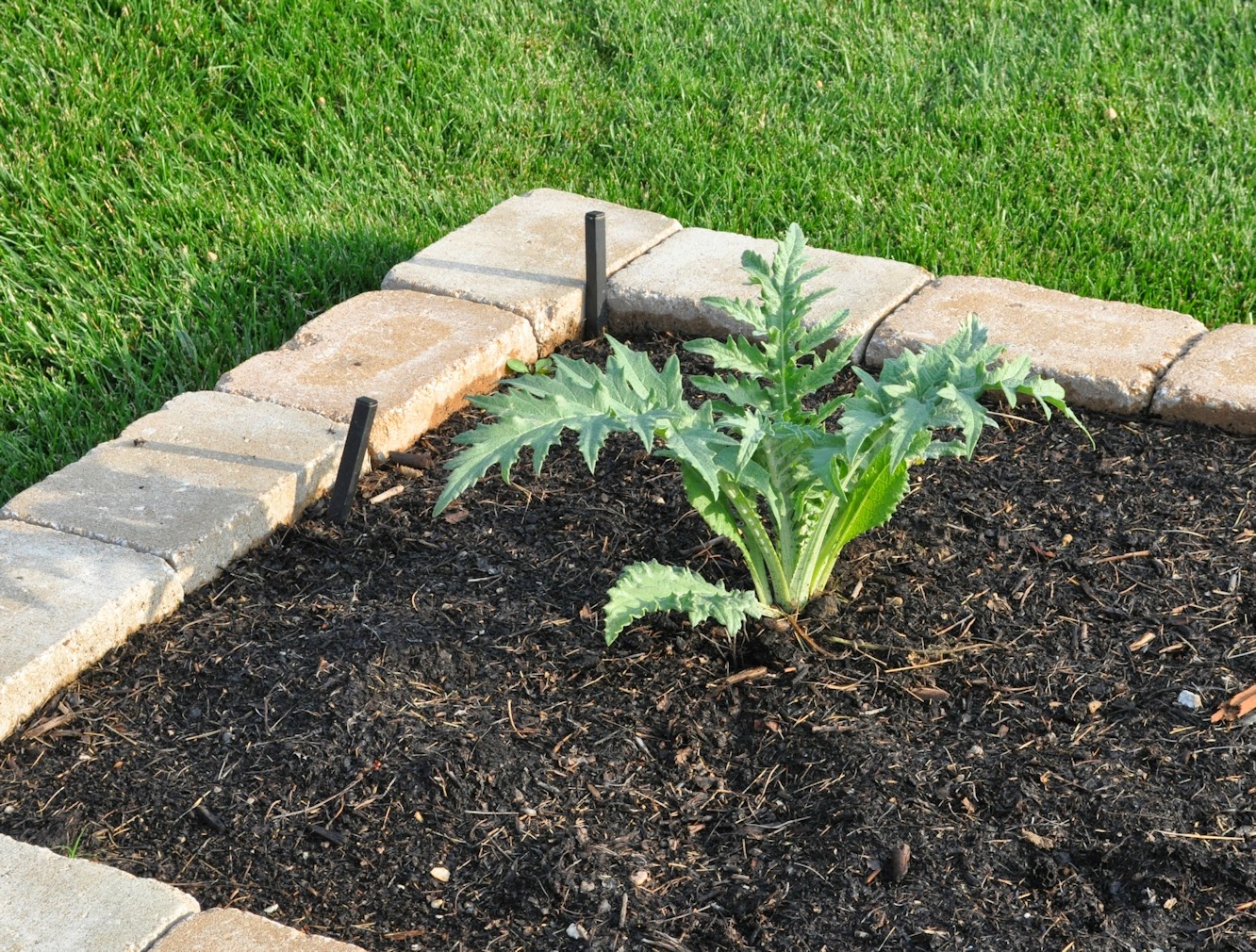Many of the plants here have personalities. Take, for instance this colonnade of the ornamental grass, Karl Foerster.
Sometimes I think of these as an honor guard. Other times they are a chorus line of dancers with big plumes waving in the breeze. We planted them along this series of paths that provide an easy way to walk though large beds of daylilies, with a wheelbarrow, a watering hose, or a friend.
From this vantage point, you can see that the paths form a diagonal line with respect to the curves that define the edges of the beds. Hidden Lake Drive is not visible in this picture. It's on a horizontal line about 2/3 of the way up the image. People walking from right to left on Hidden Lake Drive would take notice of this colonnade cutting across the opposed curves of the flower beds and converging on a berm that defines the corner of our front lawn.
Kathy placed these bright coneflowers against the block wall that was three feet farther back when we moved in. The planting area on this side of the wall was too big. The planting area on the other side was three inches! Kathy asked our "resident contractor," Steve Brandt, to move the wall so that we could plant on both sides. The wall reminds me of many walls I saw in two trips to Italy some years ago, so the wall has "personality" that I invest in it.
A little farther up the wall, there's a zigzag to make the wall meet the column supporting a white globe "night light." I wanted some lavender plants, and Kathy dressed one of them up with this bright raspberry Yarrow, backed by the feathery foliage and small cream pink flowers of a Potentilla bush.
Another effect I like very much is the juxtaposition of sedum plants (Kathy has a big collection) with plants of contrasting texture. In the upper left, a native Baptisia plant with yellow flowers in May. Garden phlox on the upper right. Yarrows here and there. It's the sedums, though, that speak to me of Kathy's nature. I am fascinated with all of her collections; her buttons, her Shawnee china, her full set of Perry Mason books by Erle Sanley Gardner.
There are several personalities in the circular bed above. I planned this around the "patient presence" of a Crimson Pygmy Barberry plant. I first bought one of these to anchor the end of a long bed of daylilies at The Green Center in University City. I loved the effect of pink or rose daylilies with the Barberry as a background presence.
Here I think the bed is crowded with too many nice ideas. I love the coral pink annual poppies. I also love the blue violet Geranium, Rozanne, but it grows pretty big for the space it's in, and I love the blue flowers of Plumbago, which is not quite visible in this picture and is not yet in bloom. The big clump of the daylily Barbara Mitchell in the foreground is going to overpower the bed in another two weeks when it's in bloom, so I have to think about reducing the bulk of that plant.
Here is a daylily that carries a twenty year memory for me, BITSY.
This plant was a Father's Day gift from my late wife, San, back in 1993 when we lived in Hyde Park, Vermont and bought many of our garden plants from Don and Lela Avery at the nearby Cady's Falls Nursery. Bitsy starts the daylily season for us and it comes back with another round of bloom in the fall, continuing until a killing frost in November.
In another bed in the back yard is a daylily named RIVER WIND by my California friend, Bonnie Holley. What a personality this plant has!
This calls to mind an extravagant daylily purchase I made fourteen years ago, when Matthew Kaskel introduced his TAR AND FEATHER and said that if anyone owned just one of his daylilies, that should be the one. I bought it, and I was wowed by the bold color and pattern. Tar and Feather is the grandparent of Bonnie's RIVER WIND. I see the vibrant color personality of it, but this plant is not a knock-off. It's a step along the path of discovery that is hybridizing.
Our vegetable beds have been planted for ornamental impact this year. In one of them we've got four artichoke plants that seem to double in size every couple of weeks. With any luck we will be harvesting artichokes in October. Getting there with such a statuesque plant is going to be fun!
I have enough frozen pesto to last four or five years at the rate we use it, so there is no reason to grow Basil plants except for the look of them and the scent of their leaves. Believe me, when the San Marzano tomatoes are eating size, they will be served with fresh leaves of green or purple Basil. I have four plants of dill to the left of the green Basil. That's for salmon dinners or just for the fun of having a self-seeding dill forest close at hand.
Beyond the Basil bed is a feeding area for bunnies or ducks, I don't know which. I planted the whole bed in Swiss Chard. Some of the plants have been nibbled to ground level, while others are beginning to look too big for nibbles. I do hope some thrive long enough to provide me with ingredients for the saute pan.
To me, these associations with memory and with human qualities are the essence of gardening. My garden is a collection of emotional triggers. My life is in these plantings, hundreds of stories too involved to tell, hundreds of moments, a kaleidoscope of prayer.













1 comment:
Enjoy reading your posts and you take great photos.
Post a Comment